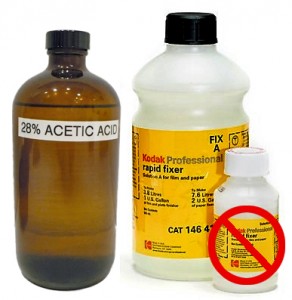 As most know by now, we use staining film developers. To be specific, we use the classic PyroCat HD formula from Sandy King. This developer gives us the type of negative we like. Keep in mind that creating art, no matter what may be your chosen medium, is a very personal thing. What works for me may very well not be at all acceptable to you. My father used to say, “that is why they paint cars different colors.” Personally I do not care for red cars.
As most know by now, we use staining film developers. To be specific, we use the classic PyroCat HD formula from Sandy King. This developer gives us the type of negative we like. Keep in mind that creating art, no matter what may be your chosen medium, is a very personal thing. What works for me may very well not be at all acceptable to you. My father used to say, “that is why they paint cars different colors.” Personally I do not care for red cars.
All of that said, I have experimented with numerous staining developers and have chosen the one that works best for us. Along my journey of research I have found many opinions and myths that I have found to just not be true. Everyone seems to have an idea of what they believe to be true, but few have actually gone to the trouble to, as Fred Picker would say, TRY IT.
One area of great debate when it comes to staining developers is what stop and fix is appropriate. I find that this is not that great an issue and even John Wimberley agrees. Just in case you have not heard of John Wimberley, he is the father of modern Pyro developers. Even Gordon Hutchings the father of PMK, and author of “The Book of Pyro” was preceded by Wimberley and his first modern formula, WD2H. From an article titled “PyroTechnics Plus: Formulating a New Developer” in Photo Techniques magazine, March/April 2003, Wimberley has the following to say about Stop Bath and Fixer:
“Myths abound concerning the correct stop bath and fix to use with pyro, but it is not a critical issue. Either an acid or plain-water stop bath may be used, and any standard or rapid fixer is acceptable. . . However, avoid hardening fixers. I recommend the manufacturer’s minimum recommended time to avoid the possibility that sodium sulfite in the fixer might weaken the dye mask.”
Wimberley goes on to say that you should follow the manufacturer’s suggestion as to the proper stop for any type of fixer. If you use an alkaline fixer, use a plain water stop, or follow the instructions. He also says Hypo Clearing Agent (HCA) should not be used, since they are mostly sodium sulfite and “the enemy of the dye mask.” He recommends a 10 minute wash time in running water sufficient to complete five changes of water by volume.
If you do much research on this subject, you will find a lot of differing opinions. The thing is, you finally have to draw a line and choose what you intend to do with your processing procedures. So, having said that, here is the way I process film using PyroCat HD.
• Film is processed in open trays by the shuffle method
• Acid stop using 3ml 28% Acetic Acid plus 1,000ml water
• Fix in Kodak Rapid Fixer (no hardener)
• Rinse in running water 2-3 minutes
• Wash in a vertical washer 15-20 minutes
• Bathe in 2 drops wetting agent plus 1,000 ml distilled water
• Hang to dry
This is how I process film using my chosen staining developer. I am sure there are those that will point out all of the reasons this will not work, but I can assure you, it works for me. The most important thing to do is to be consistent. If you do things exactly the same every time, there is a very good probability that you will see consistent results. Fred Picker would say, “different is not the same.”
Remember, the best thing you can do is finalize your procedures and get on with creating your art. The finished print is what is important, how you get there should not get in the way of your creativity.
JB
• Acid stop using 3ml 28% Acetic Acid plus 1,000ml water
• Fix in Kodak Rapid Fixer (no hardener)
• Rinse in running water 2-3 minutes
• Wash in a vertical washer 15-20 minutes
• Bathe in 2 drops wetting agent plus 1,000 ml distilled water
• Hang to dry
